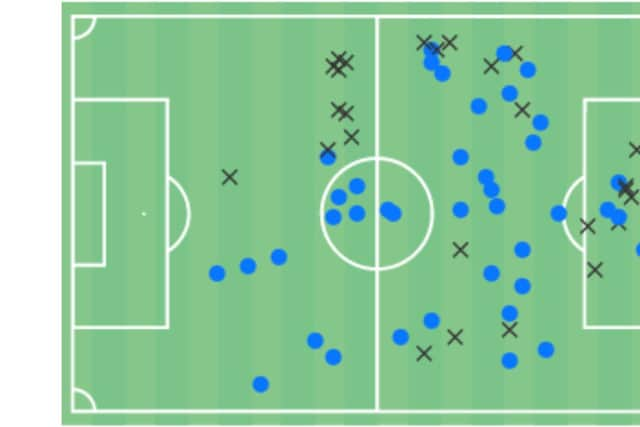How Sunderland missed Ross Stewart against Middlesbrough as Tony Mowbray seeks tactical solution
and live on Freeview channel 276
“Listen I think any team is probably frightened of them two at the minute,” Evans told the Echo at the end of August.
“They can make a sort of bad ball into a good ball in a way and are a threat for anyone.”
Advertisement
Hide AdAdvertisement
Hide AdIt was therefore a significant blow for the Black Cats when Stewart picked up an injury during the pre-match warm-up at Middlesbrough, a setback that will leave the striker sidelined for at least six weeks.


Head coach Tony Mowbray was forced to make a quick change just minutes before kick-off. With no recognised striker on the bench, Patrick Roberts was drafted into the starting XI as Sunderland operated with an extra playmaker instead of two imposing strikers.
Stewart’s absence was more than noticeable in the 1-0 defeat at Middlesbrough, as the side’s game plan was abruptly altered and refunctioned.
Aside from their defeat at Sheffield United, when they played most of the match with 10 men following Dan Neil’s red card, Sunderland’s expected goals total at the Riverside (0.56, according to Wyscout) was the lowest they’ve recorded in the Championship this season.
Advertisement
Hide AdAdvertisement
Hide AdThe Black Cats also won just 33.77% of their offensive duels, again their lowest in the league this campaign aside from the Sheffield United fixture, with Simms often isolated up front in the first half.


Like many Championship sides, Middlesbrough are set up to play with a back three and wing-backs, meaning Simms often came up against central defender Dael Fry.
As shown by figure one, Fry was usually able to contain Simms while Roberts and Alex Pritchard took up deeper roles in more central areas.
While Stewart will also operate in central areas, particularly in the penalty area, the Scot is also effective making runs and linking up play across the final third, where he can use his 6 ft 2 frame to win headers and hold the ball up.
Advertisement
Hide AdAdvertisement
Hide AdHis constant movement is highlighted by figure two, showing the location of the striker's actions in the 3-0 win over Rotherham.


Stewart is also important when Sunderland are pressing high up the pitch, and his absence helped Middlesbrough when Chris Wilder’s side tried to play out from the back.
PPDA is a metric which measures pressing by establishing how many passes a team allows before they disrupt a move, whether it be through an attempted tackle or interception.
Against Boro, Sunderland’s PPDA, showing how many passes their opponents were allowed, was 10. Only QPR (10.4) and Sheffield United (11.81) have been allowed more passes per defensive action against the Black Cats in the league this season.
Advertisement
Hide AdAdvertisement
Hide AdClearly, one game without Stewart is an extremely small sample size, yet it was also apparent how much they missed him.
Read more
Pritchard, Roberts and Elliot Embleton have shown they are players with excellent technical ability, while Amad Diallo may offer more pace in behind opposition defences.
While Simms and Stewart were key for Sunderland over a six-game spell, which saw them score eight goals between them, Sunderland’s attack will take on a different look in the coming weeks.
